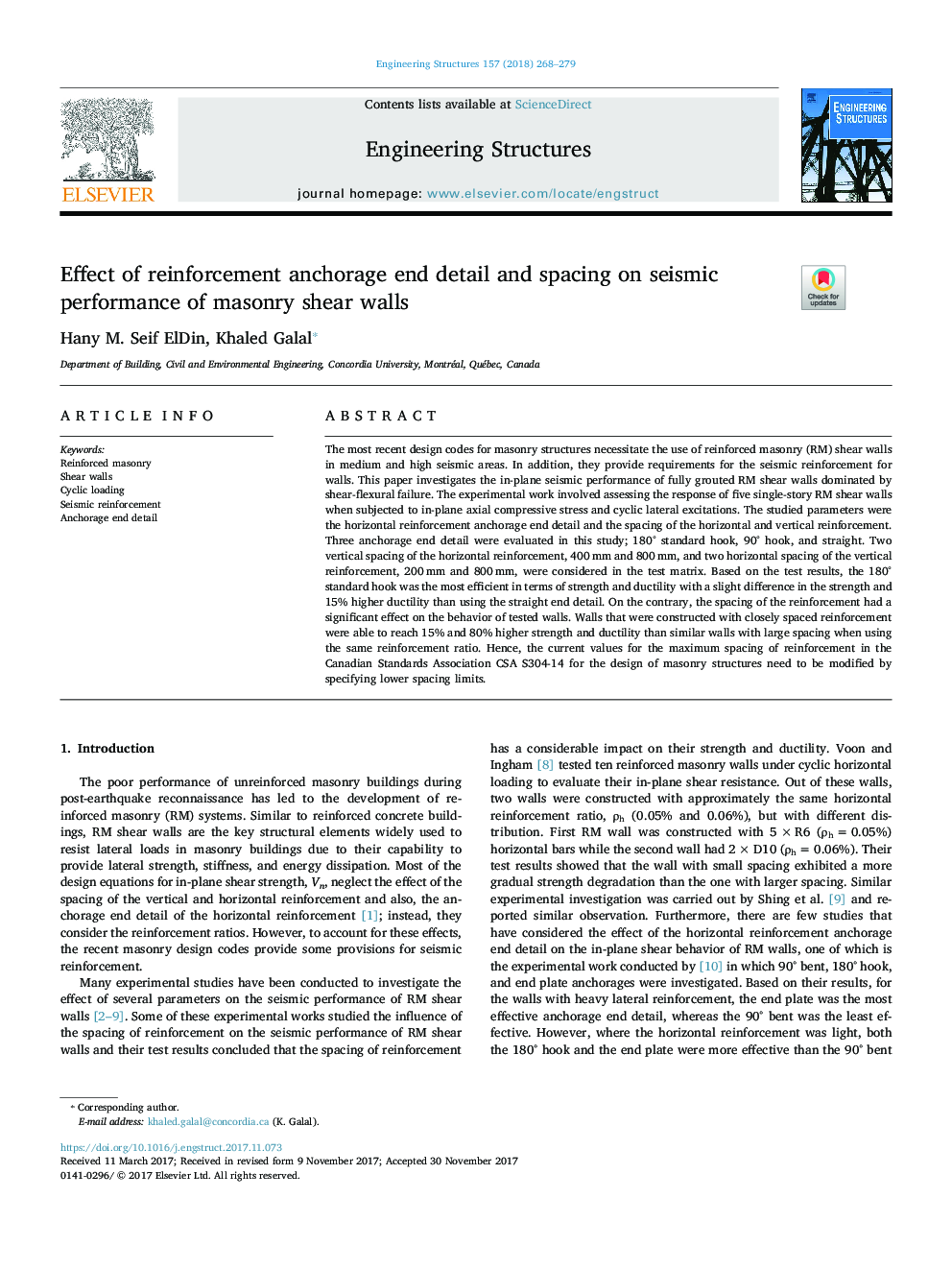| Article ID | Journal | Published Year | Pages | File Type |
|---|---|---|---|---|
| 6738746 | Engineering Structures | 2018 | 12 Pages |
Abstract
The most recent design codes for masonry structures necessitate the use of reinforced masonry (RM) shear walls in medium and high seismic areas. In addition, they provide requirements for the seismic reinforcement for walls. This paper investigates the in-plane seismic performance of fully grouted RM shear walls dominated by shear-flexural failure. The experimental work involved assessing the response of five single-story RM shear walls when subjected to in-plane axial compressive stress and cyclic lateral excitations. The studied parameters were the horizontal reinforcement anchorage end detail and the spacing of the horizontal and vertical reinforcement. Three anchorage end detail were evaluated in this study; 180° standard hook, 90° hook, and straight. Two vertical spacing of the horizontal reinforcement, 400â¯mm and 800â¯mm, and two horizontal spacing of the vertical reinforcement, 200â¯mm and 800â¯mm, were considered in the test matrix. Based on the test results, the 180° standard hook was the most efficient in terms of strength and ductility with a slight difference in the strength and 15% higher ductility than using the straight end detail. On the contrary, the spacing of the reinforcement had a significant effect on the behavior of tested walls. Walls that were constructed with closely spaced reinforcement were able to reach 15% and 80% higher strength and ductility than similar walls with large spacing when using the same reinforcement ratio. Hence, the current values for the maximum spacing of reinforcement in the Canadian Standards Association CSA S304-14 for the design of masonry structures need to be modified by specifying lower spacing limits.
Related Topics
Physical Sciences and Engineering
Earth and Planetary Sciences
Geotechnical Engineering and Engineering Geology
Authors
Hany M. Seif ElDin, Khaled Galal,
